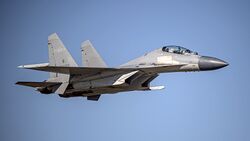Scanderan wyvern: Difference between revisions
No edit summary |
Ozycaevias (talk | contribs) m (1 revision imported) |
(No difference)
| |
Latest revision as of 18:52, 5 March 2019
| Scanderan Wyvern | |
|---|---|

| |
| A drawing of a Scanderan wyvern | |
| Scientific classification | |
| Kingdom: | Animalia
|
| Phylum: | Chordata
|
| Class: | Reptilia
|
| Order: | Squamata
|
| Family: | volanssaur
|
| Genus: | Wyvernus
|
| Species: | W.Scandera Major
|
| Binomial name | |
| Wyvernus Scandera Major Hylfred Görenssen, 1789
| |
| File:Habitat wyvern.png | |
| Habitat | |
Just like it's larger cousin the dragon so is the scanderan wyvern a large winged predator that inhabits the mountain ranges of Scandera where it is often forced to compete with the dragons living there. While it lacks it's larger cousin's ability to breath fire so is it still able to pose quite a danger to even dragons with it's large poisonous sting that it sports at the end of it's tail.
Etymology
The modern word wyvern in Scandera comes from the old urmål word wyver.
History
Even as late as Grynings tiden so have there been Rune stones and Petroglyphs that told the tales about Scanderans domesticating wyverns for warfare and the image of a wyvern rider was under a long time a common sight on the Scanderan battlefield. However so were they often used very conservatory and were often ridden by trained commoners rather than noblemen as it was easy to fall of and there were little glory to be won on one.
The use of the wyvern was almost universal through all of Scanderan history and it served as a scout while it at times were used to drop stones on enemy formations even if the later use was rare as it was not too effective and costly. However despite that so were wyvenrs often deployed in case the enemy would try something like that themselves.
The reason for the lack of use of a wyvern were many however the most sited ones were the cost of raising a fully grown wyvern and the exposed position they had in the air where bowmen, scorpios and later crossbowmen proved to be mortal danger for the flying beast if they tried to bomb enemy formations and charges often proved fatal for the wyvern if it clashed into the enemy while spears, throwing axes and javelins often killed them if they tried to attack a shieldwall while flying over them. The rising popularity of the pike square managed to kill off any hope for a wyvern attack to be successful from the air.
However to help a wyvern rider to kill other wyverns so were the beast often ridden by a pair of men, one armed with a long lance and a battle eagle that was responsible for the wyvern by telling it where to fly while the other man was armed with a heavy arbalest that could kill wyverns on close ranges, especially if they tried to engage the team from above and use the wyvern's tail at the pairs wyvern.
Taxonomy
Just like the dragon, dragonling and wyvernling so were the wyvern defined as a "Volosaurus" or "flying lizard" where Hylfred Görenssen separated the six limbed dragons and the four limbed wyvern into two different Genus, the wyverns were put in the category "Wyvernus".
Anatomy and health
The Scanderan wyvern is a large predator that while clumsy on ground is fast and agile in the air. A wyvern differ from a dragon in the fact that it has merely four limbs, two legs and two wings rather than the six that a dragon has. Neither so can the wyvern breath fire but instead does it have a large stinger at the end of it's tail that is filled with a deadly poison that can kill a weak or old dragon but other is good enough to scare it off with.
Reproduction
The wyverns mate in pairs and spends their entire life with their mates in a very small family group. After a female have laid an egg so does she nest it while the male hunts for both until the egg hatches almost five months after it has been laid. The kid then stays with it's parents for a year before it flies off to find a female and a cave of it's own. They have however been known to dig their own in the mountain sides if they do not find a natural one.
Diet
The wyvern is a highly predatory animal and hunts the large mammoth herds in the northern iceplains as well as other big mammals as cows, bisons, rhinos and smaller whales.
Behaviour
The wyvern is a highly territorial animal that lives most of it's life in it's cave and it only leaves it to hunt. However so is it common for wyvern caves to be within flight distance of other caves in large colonies that spreads out over massive stretches of mountains where they help to defend their own caves from predators that would hurt them like lions, rotbestar, giant vipers and other large creatures or packs of creatures as Bat beasts have been known to take over wyvern caverns.
if it's cavern is in danger so will a wyvern defend it however it's main instinct is to try to escape and get airborne and then pick of it's prey when they tries to leave it's cave.
This is a tactic that is very similar to a wyvern's hunting tactic where it flies high above ground trying to find a prey. Once it's target have been aquired so does it dive down and kill it with it's sting before landing close by and taking the prey back home to it's cavern.
Life expectancy
A wyvern can grow up to 40 years old.